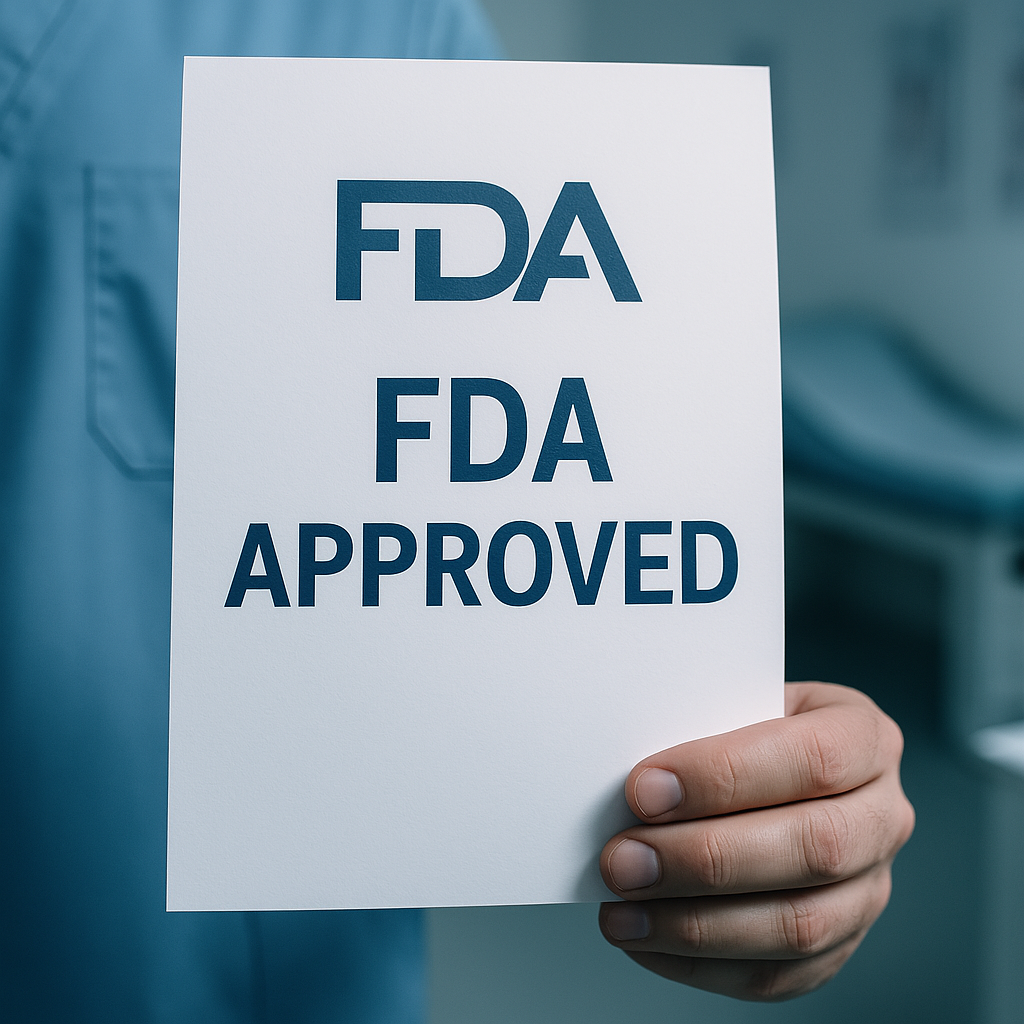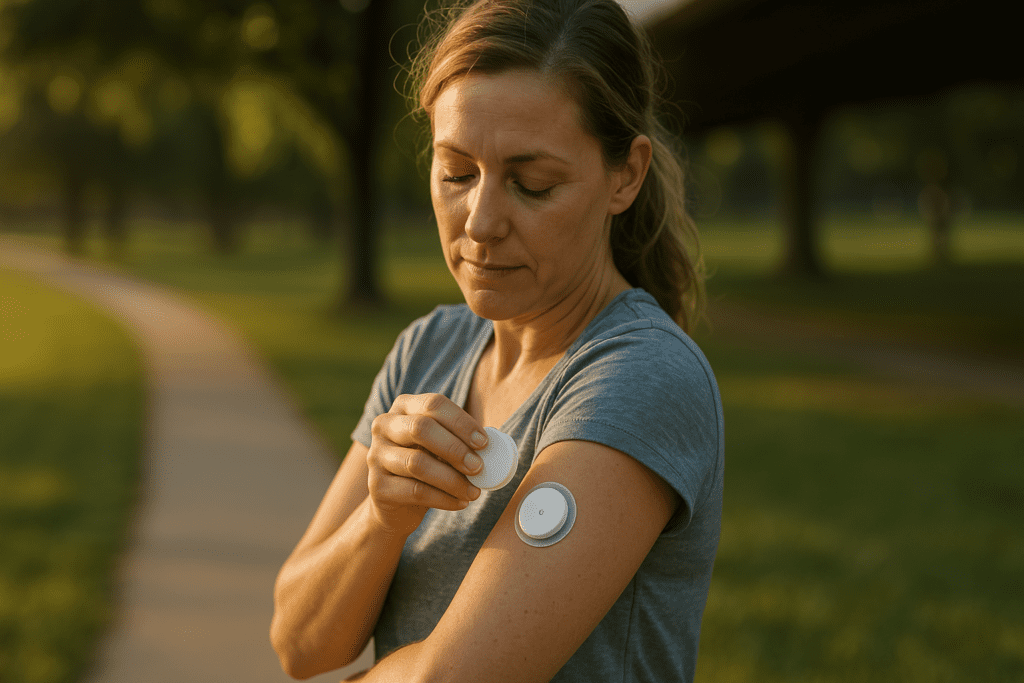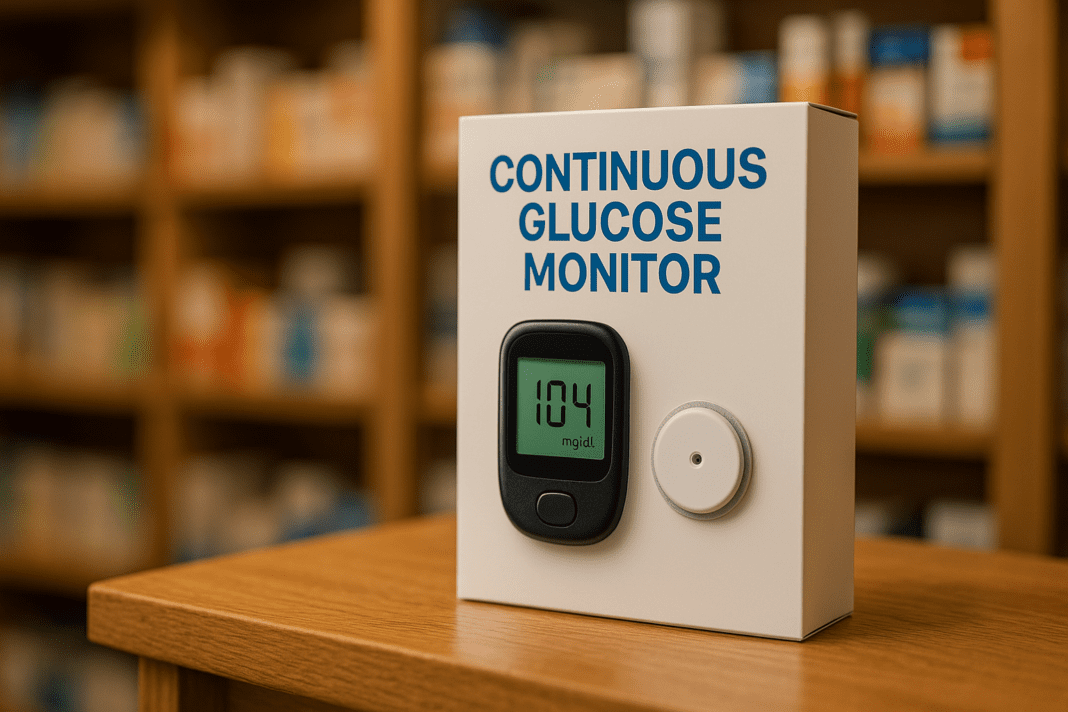A New Era in Diabetes Care: The Push Toward Over-the-Counter CGMs
Continuous glucose monitors (CGMs) have revolutionized the way individuals manage diabetes, offering real-time insights into blood glucose fluctuations. Once considered a high-tech tool reserved for endocrinologists and specialized diabetes clinics, CGMs are now on the brink of becoming widely accessible. The pressing question many are asking is this: When will CGMs be available over the counter? This inquiry is not only timely but also emblematic of a larger shift in healthcare—one that prioritizes accessibility, affordability, and patient empowerment.
You may also like: Breakthroughs in Current Diabetes Research: What the Latest Studies Reveal About Treatment and Prevention
The move toward over-the-counter CGMs (OTC CGMs) is part of a broader trend in digital health innovation. It reflects growing consumer demand for tools that enable better self-monitoring and more proactive health management. In this article, we will explore the evolving regulatory landscape, discuss the science behind FDA-approved glucose meters, and examine what the upcoming over the counter CGM release date means for patients, providers, and the healthcare system at large. This comprehensive guide will shed light on the past, present, and rapidly approaching future of glucose monitoring technologies.
Understanding CGMs: The Technology Behind the Trend
To grasp the significance of OTC CGMs, it is essential to understand what continuous glucose monitors do and how they differ from traditional blood glucose meters. Unlike fingerstick tests that provide a snapshot of blood sugar at a single moment, CGMs continuously measure glucose levels in interstitial fluid throughout the day and night. This offers a dynamic picture of how blood sugar responds to meals, exercise, stress, and sleep.
A CGM system typically includes a small sensor inserted just under the skin, a transmitter that sends data wirelessly, and a receiver or smartphone app that displays glucose readings in real time. This constant stream of information allows for more precise insulin dosing and improved glycemic control, especially in individuals with Type 1 or insulin-dependent Type 2 diabetes. The benefits are well-documented in clinical trials, with users experiencing fewer episodes of hypoglycemia and improved hemoglobin A1c levels.
However, until recently, access to CGMs was largely limited to those with insurance coverage or the financial means to afford them out of pocket. The technology’s potential to improve outcomes has driven calls to expand availability, leading to discussions around regulatory reform and the path to FDA-approved blood glucose meters becoming more consumer-friendly.

The Role of the FDA in Glucose Monitoring Approval
The U.S. Food and Drug Administration (FDA) plays a critical role in determining which medical devices reach consumers and under what conditions. For CGMs, FDA approval is based on rigorous clinical testing to assess accuracy, safety, and usability. This process includes comparisons to laboratory-grade glucose tests and evaluations of how devices perform across various conditions, including different skin tones, hydration levels, and ambient temperatures.
Over time, the FDA has approved several CGM models for prescription use, including systems from Abbott (FreeStyle Libre), Dexcom (G6 and G7), and Medtronic. These fda approved glucose meters have transformed diabetes management, but they have also highlighted the barriers created by prescription requirements. Patients without consistent medical care or insurance often face delays and limitations in obtaining CGMs, even when clinically indicated.
Recent shifts in regulatory policy suggest a more progressive stance toward accessibility. In 2023, the FDA granted clearance for the first over-the-counter CGM—a move that signaled a turning point in the device landscape. This historic decision not only responded to technological advancements but also recognized the changing healthcare environment, where consumer autonomy and digital health literacy are on the rise.
Over-the-Counter CGM Release Date: What We Know So Far
While the FDA has approved at least one OTC CGM, consumers are still waiting for widespread availability. So, when will CGMs be available over the counter at scale? Industry insiders suggest that 2025 may mark the true beginning of this transition, with several manufacturers preparing for commercial launches in pharmacies and online platforms.
The timeline for the over the counter CGM release date is influenced by multiple factors. These include supply chain logistics, marketing strategies, insurer negotiations, and pharmacy partnerships. Companies must also develop educational materials and support tools to help users understand and manage their devices without direct clinical supervision. As OTC CGMs move closer to hitting retail shelves, the need for clear labeling, intuitive design, and smartphone integration becomes more pressing.
Equally important is the role of healthcare providers in supporting the shift. While OTC CGMs will not require prescriptions, providers still play a key role in guiding patients on how to interpret data and use it for clinical decision-making. This hybrid model—where consumers buy CGMs on their own but consult providers as needed—could reshape diabetes care in profound ways.
FDA-Approved Blood Glucose Meters vs. OTC CGMs: What’s the Difference?
The emergence of over-the-counter CGMs raises questions about how these devices compare to traditional blood glucose meters. Both are classified as FDA-approved glucose meters, but their design, functionality, and use cases differ significantly. Traditional meters require a finger prick and test strip to provide a reading, making them ideal for occasional checks or for patients managing diabetes with diet and oral medication.
In contrast, CGMs offer continuous, real-time data, which is particularly valuable for insulin users who need to monitor glucose trends throughout the day. While fingerstick meters remain a cost-effective option, their limitations are evident for those seeking to achieve tighter glucose control. The advent of OTC CGMs allows more users to access advanced technology without navigating the complexities of insurance billing or specialist referrals.
It’s worth noting that the FDA does not apply a lower standard to OTC CGMs. These devices must meet the same accuracy benchmarks as prescription models. In fact, the approval of an OTC CGM reflects confidence in its safety and ease of use for the general public. As such, the line between fda approved blood glucose meter and OTC CGM may become increasingly blurred as consumer preferences shift.

Who Stands to Benefit from OTC CGMs?
The move toward over-the-counter availability opens the door for a much wider demographic to engage with CGM technology. People with prediabetes, individuals with Type 2 diabetes not on insulin, and those interested in metabolic health for weight management or fitness optimization may now consider using CGMs without needing a medical prescription. This democratization of health data is expected to empower users to better understand how food, exercise, sleep, and stress affect their glucose levels.
Moreover, OTC CGMs could improve equity in diabetes care. Historically marginalized populations often face barriers to specialist care, but retail access to CGMs may help bridge that gap. Pharmacies in underserved communities can become hubs for self-monitoring tools, reducing disparities and enhancing preventive health strategies.
The flexibility of OTC CGMs also aligns with modern wellness trends. From biohackers to athletes, a growing number of health-conscious individuals are exploring ways to optimize their physiology. Glucose monitoring is increasingly seen as a tool for gaining insight into metabolic performance, and the expansion of the market reflects this cultural shift.
Challenges Ahead: Cost, Education, and Misuse
Despite the promise of OTC CGMs, there are legitimate concerns about their rollout. One of the most significant challenges is cost. Without insurance coverage, CGMs can be expensive, especially when sensors need to be replaced every 10 to 14 days. While retail pricing has become more competitive, affordability remains a barrier for some users.
Education is another critical issue. CGM data can be complex and sometimes misleading if not interpreted correctly. Individuals without medical guidance may misread trends or make inappropriate adjustments to their diet or medication. To mitigate this risk, manufacturers must prioritize user-friendly interfaces, built-in alerts, and accessible educational resources.
There is also the potential for misuse. People without a clinical need may over-rely on CGMs or draw false conclusions from glucose data. While increased health awareness is generally positive, it must be grounded in scientific understanding. The role of healthcare professionals in contextualizing CGM data will remain essential, even as devices become more consumer-focused.
How the Healthcare System May Adapt
The arrival of OTC CGMs will likely prompt changes across the healthcare ecosystem. For primary care providers and diabetes educators, the shift means more patients arriving with CGM data in hand, seeking interpretation and guidance. Clinics may need to adopt new workflows or invest in platforms that integrate consumer CGM data into electronic health records.
Payers and insurers may also adjust their coverage models. While OTC CGMs are not reimbursable through prescription benefits, some flexible spending accounts (FSAs) and health savings accounts (HSAs) may cover them. As demand increases, insurers may revisit policies to include OTC CGMs under preventive or chronic care categories.
Public health agencies, too, may embrace OTC CGMs as tools for population-level monitoring and early intervention. By identifying glucose trends in at-risk individuals, community health programs could proactively address metabolic dysfunction before it progresses to diabetes. This prevention-oriented approach could lead to significant savings and improved outcomes over time.
What Consumers Should Know Before Buying an OTC CGM
As OTC CGMs become available, consumers must approach them with both enthusiasm and informed caution. Understanding the difference between various models, their sensors’ lifespan, accuracy levels, and app compatibility is essential. Just because a CGM is sold without a prescription does not mean it is suitable for every person or every purpose.
Reading product labels carefully, consulting pharmacists, and using official manufacturer apps are all important steps. Consumers should also consider how frequently they are willing to scan sensors or replace components, as this affects both convenience and cost. Most importantly, interpreting glucose data should not replace medical advice, especially for individuals with diabetes or other chronic conditions.
If used responsibly, OTC CGMs can be powerful tools for better health management. However, like any device, they require a learning curve and a commitment to regular use. Setting realistic expectations and seeking professional input when necessary can help maximize the benefits of these innovative monitors.
Looking Ahead: The Future of Glucose Monitoring Technologies
As the question of when will CGMs be available over the counter transitions from speculation to reality, attention turns to what’s next. Advances in sensor miniaturization, non-invasive monitoring, and wearable integration suggest that the glucose monitors of tomorrow may be even more discreet, accurate, and connected.
Research is already underway into CGMs that can measure multiple biomarkers simultaneously, such as ketones, lactate, and cortisol. This could open new dimensions in chronic disease management and athletic performance tracking. Furthermore, artificial intelligence may play a role in CGM data interpretation, offering predictive alerts and personalized health recommendations.
Meanwhile, regulatory agencies are under pressure to adapt their frameworks to keep pace with innovation. Ensuring safety without stifling progress remains a delicate balance, but the FDA’s approval of an OTC CGM shows a willingness to embrace change when backed by solid evidence. As more fda approved glucose meters enter the retail market, consumers will have greater choice—and greater responsibility—in managing their health.

Frequently Asked Questions About Over-the-Counter CGMs and FDA-Approved Glucose Monitoring
1. Will over-the-counter CGMs be as accurate as prescription-based models?
Yes, over-the-counter (OTC) CGMs are required to meet the same performance standards as their prescription counterparts. The FDA does not lower accuracy or safety expectations for consumer-accessible devices, especially those intended for medical self-monitoring. While some differences in app features or data-sharing capabilities may exist, the core glucose sensing technology must pass rigorous validation before reaching the market. One advantage of newer OTC CGMs is that many are designed with user-friendliness in mind, sometimes offering simplified onboarding or automated calibration. As more fda approved glucose meters transition to OTC status, manufacturers are investing in sensor precision and reliability to build consumer trust.
2. How will OTC CGMs change glucose monitoring for people without diabetes?
OTC CGMs open up new opportunities for individuals without diabetes who are interested in understanding their metabolic health. Fitness enthusiasts, nutritionists, and individuals with insulin resistance may use CGMs to track how their body responds to meals, workouts, and sleep patterns. While not intended to replace clinical diagnostics, these devices can offer personalized insights into glycemic variability, which is increasingly linked to long-term cardiovascular and metabolic health. With the over the counter CGM release date approaching, we may see CGMs integrated into wellness programs, weight loss interventions, and corporate health initiatives. However, it’s essential that users interpret the data within an evidence-based framework to avoid unnecessary anxiety or misdiagnosis.
3. Are there risks to widespread consumer access to CGMs without medical oversight?
There are some concerns about self-diagnosis and inappropriate behavioral changes when CGMs are used without professional input. OTC CGMs can produce complex data that may be misinterpreted by individuals unfamiliar with glycemic norms or variability. For instance, a glucose spike after a meal may be completely normal but could lead to undue worry in someone untrained in endocrinology. Although OTC access removes the barrier of prescriptions, it also places greater responsibility on users to seek guidance when needed. Healthcare providers will still play a vital role in contextualizing data from even the most advanced fda approved blood glucose meter or CGM.
4. What distinguishes a fda approved blood glucose meter from an OTC CGM?
A fda approved blood glucose meter generally refers to fingerstick devices that measure capillary blood glucose at a single point in time. These are different from OTC CGMs, which continuously monitor glucose levels in interstitial fluid over days or even weeks. Blood glucose meters are typically more affordable and simpler to use, but they don’t offer the trend analysis that CGMs provide. OTC CGMs give users the ability to monitor fluctuations, set alerts, and track patterns—features that are increasingly seen as critical in proactive health management. The difference lies in the depth of data, with CGMs offering more actionable insights for dynamic lifestyle adjustments.
5. When will CGMs be available over the counter in most retail locations?
While the first OTC CGM has already received FDA clearance, full rollout to pharmacies and major retailers is expected to take place gradually through 2025. The question of when will CGMs be available over the counter in every region depends on supply chains, marketing strategies, and agreements between manufacturers and retail outlets. Large pharmacy chains are expected to be among the first distribution points, but online marketplaces may play a growing role. As public interest in metabolic health continues to rise, demand may accelerate accessibility in urban and suburban areas first, with rural access expanding later. Consumers should monitor manufacturer announcements and check availability with local pharmacies as the over the counter CGM release date nears.
6. How might OTC CGMs reshape preventive healthcare strategies?
OTC CGMs have the potential to redefine preventive care by giving users direct access to real-time glucose data. This shift could allow early intervention in prediabetic states, before full-blown diabetes develops. Individuals can identify patterns such as post-meal spikes, nocturnal dips, or stress-related fluctuations—information that can guide behavioral modifications. Employers and insurers may eventually incorporate OTC CGMs into wellness plans, incentivizing healthy habits while reducing long-term costs. As more fda approved glucose meters evolve into non-prescription tools, the integration of CGM data into primary care visits and telehealth platforms could enhance personalized preventive care.
7. Will OTC CGMs be compatible with existing diabetes management apps?
Compatibility between OTC CGMs and existing health platforms will vary by manufacturer. Some devices are designed to sync with popular diabetes management apps or fitness trackers, while others may require proprietary software. For users accustomed to uploading data from a fda approved blood glucose meter, OTC CGMs may offer enhanced dashboards, predictive alerts, and even AI-powered trend analysis. However, it’s important to ensure that any connected apps are HIPAA-compliant and secure. Integration with Apple Health, Google Fit, and similar ecosystems is likely to improve as the market for OTC CGMs expands and consumer demand drives interoperability.
8. How do over-the-counter CGMs align with the trend of personalized nutrition?
OTC CGMs are increasingly being adopted as tools for personalized nutrition, allowing users to see how specific foods affect their glucose response. This granular feedback can be especially useful for individuals following low-carb, ketogenic, or intermittent fasting regimens. Rather than relying solely on generic dietary advice, users can tailor meal timing and composition based on real-time biological feedback. With more people asking when will CGMs be available over the counter, nutrition coaches and registered dietitians are beginning to incorporate CGM data into individualized meal plans. The convergence of OTC CGMs and nutritional science may lead to a new era of data-driven dietary counseling.
9. Can OTC CGMs support mental health awareness in diabetes care?
Emerging research suggests a strong bidirectional relationship between glucose variability and mental health. OTC CGMs can help individuals with diabetes and related conditions identify blood sugar patterns that correlate with mood changes, fatigue, or anxiety. By offering continuous data without needing a prescription, these devices may help users feel more in control, reducing the psychological burden of disease management. Furthermore, digital platforms connected to OTC CGMs could incorporate mood tracking features, allowing for deeper insight into the mind-body connection. The over the counter CGM release date may mark a turning point not only in physical health monitoring but also in emotional self-awareness.
10. How should consumers assess the credibility of new OTC CGM brands?
With the influx of new products following the anticipated over the counter CGM release date, discerning consumers must evaluate brands based on more than price alone. Start by verifying whether the product is an FDA approved glucose meter or sensor system, which indicates a minimum standard of safety and performance. Look for peer-reviewed studies, clinical trial data, and third-party endorsements from credible medical organizations. Consumers should also check for reliable customer support, return policies, and update frequency of associated apps. As the market grows, separating innovation from hype will be critical, especially when choosing between multiple OTC CGMs with varying features and levels of accuracy.
Conclusion: How Over-the-Counter CGMs Are Reshaping Glucose Monitoring and What It Means for You
The transition to over-the-counter CGMs marks a transformative moment in diabetes care and preventive health. With the FDA’s endorsement of devices that meet high standards for accuracy and usability, consumers are being empowered to take control of their metabolic health in unprecedented ways. But with that empowerment comes a need for education, discernment, and ongoing clinical support.
Understanding the differences between a traditional fda approved blood glucose meter and a next-generation OTC CGM is crucial. While both serve the essential function of glucose monitoring, only CGMs offer the continuous insight needed for precision management. The upcoming over the counter CGM release date represents not just a product launch, but a broader cultural and clinical shift toward data-driven, patient-centered care.
As 2025 approaches and these devices begin appearing in pharmacies and on digital shelves, the healthcare community—and the public—must be ready. Whether you’re managing diabetes, monitoring metabolic fitness, or simply curious about how your body processes food, OTC CGMs offer a window into your inner physiology. By using these tools wisely and in collaboration with trusted professionals, we can usher in a new era of personalized, proactive health care that benefits everyone.
continuous glucose monitoring, real-time glucose tracking, wearable glucose sensors, diabetes tech innovation, blood sugar trends, non-invasive glucose monitors, metabolic health tools, digital health devices, personalized diabetes care, self-monitoring technologies, remote patient monitoring, glucose analytics apps, smart health devices, insulin management tools, next-gen health wearables, tech-enabled diabetes solutions, preventive health technology, digital chronic disease management, biosensor wearables, glucose data insights
Further Reading:
Are Continuous Glucose Monitors Available OTC? Plus, Answers to 6 Other FAQs
The First Over-the-Counter Continuous Glucose Monitor: Is It Right for You?
Breaking: FDA Clears Dexcom Stelo, First OTC Continuous Glucose Monitor
Disclaimer
The information contained in this article is provided for general informational purposes only and is not intended to serve as medical, legal, or professional advice. While MedNewsPedia strives to present accurate, up-to-date, and reliable content, no warranty or guarantee, expressed or implied, is made regarding the completeness, accuracy, or adequacy of the information provided. Readers are strongly advised to seek the guidance of a qualified healthcare provider or other relevant professionals before acting on any information contained in this article. MedNewsPedia, its authors, editors, and contributors expressly disclaim any liability for any damages, losses, or consequences arising directly or indirectly from the use, interpretation, or reliance on any information presented herein. The views and opinions expressed in this article are those of the author(s) and do not necessarily reflect the official policies or positions of MedNewsPedia.


